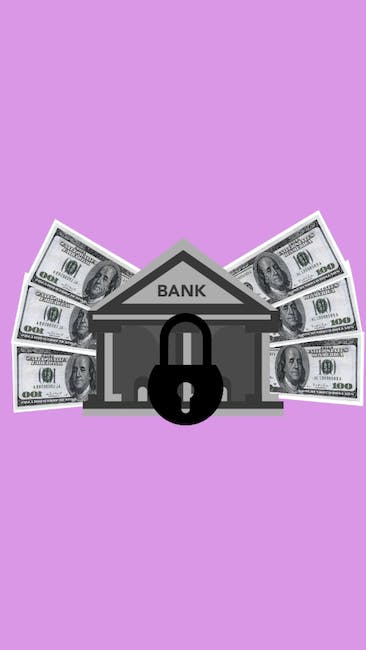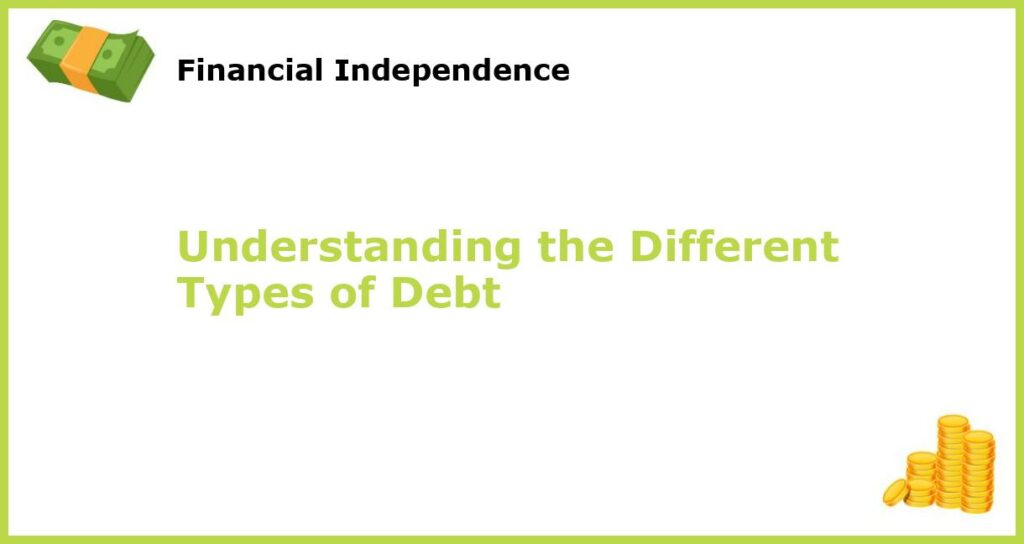Debt is a universal concept that affects millions of people worldwide. It is an obligation to pay money or something of value to another party. There are various types of debt that a person can incur over the course of their life. Understanding these different types of debt and their nuances can make a significant difference in managing one’s finances and improving overall financial health.
Secured Debt

Secured debt is a type of debt backed by collateral. When you take on secured debt, you pledge an asset as collateral, such as a car, property, or even jewelry. In case you default on your payments, the lender has the legal right to repossess or foreclose on the asset. This type of debt, therefore, poses a higher risk to the borrower as they stand to lose their assets in case of a default. Lenders are, however, more likely to offer secured loans as they are deemed less risky.
Unsecured Debt

Unsecured debt is a type of debt that is not backed by any collateral. Examples of unsecured debt include credit card debt, medical bills, and personal loans. This type of debt poses less risk to borrowers, as they do not risk losing their assets in case of a default. However, lenders have less security with unsecured loans, making them more stringent in screening loan applicants, resulting in higher interest rates than secured loans.
Revolving Debt

Revolving debt is a line of credit that you can use repeatedly. Credit cards are a very common example of revolving debt, where a borrower can spend up to a certain credit limit and then pay it back interest-free within the grace period. However, once the grace period has ended, interest begins to accrue on the outstanding balance, and the borrower pays interest only on the amount borrowed, not the entire line of credit.
Installment Debt

Installment debt is a loan that requires a borrower to repay the loan amount in equal payments (installments) over a set period. Examples of this type of debt include a car loan, student loan or mortgage. Installment debt often has a specified term length, and the borrower knows exactly when the loan will end. This allows for better financial planning as the borrower can set aside a specific amount each month to ensure they pay the loan on time.
Demand Debt

Demand debt is a type of loan that the lender can demand payment in full at any time. Credit cards are an example of demand debt, where the borrower is required to pay the outstanding balance in full upon request. This type of debt poses a higher risk to the borrower as the lender can demand payment immediately, potentially causing financial strain.
Payday Loans

Payday loans are short-term loans, usually due on the borrower’s next payday. They typically have very high-interest rates and are meant to be used as a last resort by people who need cash quickly. The problem with payday loans is that borrowers often take on more debt than they can realistically afford to pay back. Additionally, the interest rates on these loans can quickly accumulate, leading to an unmanageable amount of debt.
Structured Debt
Structured debt is a type of debt that is packaged and sold to investors. Collateralized debt obligations (CDOs) are an example of structured debt that typically includes multiple types of debt instruments. These securities can be risky and have been known to cause financial crises, such as the 2008 global financial crisis. Structured debt is considered complex, and only experienced investors who fully understand the risks should consider investing their money in this type of debt instrument.
Municipal Bonds
Municipal bonds are debt instruments issued by local government agencies or municipalities to finance infrastructure projects such as schools, highways, and sewage systems. They are attractive to investors in high tax brackets as the interest earned on municipal bonds is typically tax-free. Municipal bonds are considered relatively low-risk compared to other types of debt, making them a good option for risk-averse investors.
Junk Bonds
Junk bonds are high-risk, high-reward debt instruments that are issued by companies with poor credit ratings. Junk bonds are considered extremely risky because they are issued by companies that may have a history of defaulting on their debt payments. Investors who purchase junk bonds will receive a higher interest rate than other types of debt to compensate for the increased risk. Junk bonds, therefore, only suit experienced investors who are willing to take risks.
In conclusion, becoming familiar with the different types of debt is essential when managing finances. Debt is a useful tool when used responsibly, but it can be highly detrimental when the borrower becomes overburdened with debt. Understanding the terms and conditions of each type of loan can help individuals make informed decisions about their credit and borrow responsibly.







